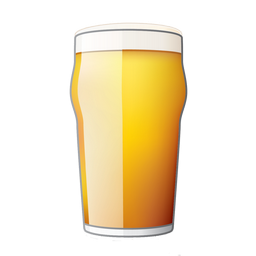 BeerSmith 3 Getting Started Guide
BeerSmith 3 Getting Started Guide
Welcome to BeerSmith – this brief article will help you get started with BeerSmith and highlight many key features and as resources. For an overview I recommend watching a few of the short videos below to get started.
Videos for BeerSmith Web Version
- Videos can be found on the BeerSmith video tutorial page
Setting Up Your Equipment – An Important First Step
Videos on Creating a Recipe in BeerSmith 3
NOTE: A lot more videos can be found on the BeerSmith video tutorial page
- Creating a Beer Recipe in BeerSmith 3 (3:52)
- Creating a Mead Recipe in BeerSmith 3 (8:17)
- Creating a Cider Recipe in BeerSmith 3 (4:13)
- Creating a Wine Recipe in BeerSmith 3 (5:33)
How to Activate BeerSmith 3
BeerSmith 3 Features
- Adjusting your Water Profile in BeerSmith 3 (4:20)
- Mash pH Adjustment Tools in BeerSmith 3 (3:21)
- Whirlpool, Steep and No-Chill Hops in BeerSmith 3 (4:17)
- High Altitude Brewing Features in BeerSmith 3 (3:21)
- Scaling the Size of a Recipe in BeerSmith 3 (4:02)
- Rating and Sharing Cloud Recipes in BeerSmith 3 (3:42)
- Using the Cloud Folder Features in BeerSmith 3 (2:02)
NOTE: A lot more videos can be found on the BeerSmith video tutorial page
Frequently Asked Questions
- BeerSmith 3 Frequently Asked Questions
Important First Steps – A Basic Guide
Important Step 1: Selecting or Creating an Equipment Profile
To create your first recipe in BeerSmith, the program first needs to know a little about how large a batch you are making and your equipment setup. In BeerSmith, this is called an equipment profile. You have the following options:
- You can go to Profiles->Equipment and view the pre-installed profiles to see if there is one close to your particular setup. Often you can modify an existing profile by double clicking on it and adjusting the losses/volumes slightly and use it. If you have a good option, you can simply use it in your profile (or set it as a default under Options->Brewing)
- You can go to File->Add-ons and search for an add-on matching your equipment profile. We have profiles for many specific vendors here like Blichmann, Brewha, and many others. If you find a matching add-on, just download it and it will be installed in your Profiles->Equipment view for future use.
- You can create your own equipment profile using this article or watch the video on setting up equipment here.
Once you have a good equipment setup, you can use it in a recipe by selecting it or to permanently set that profile as the default you can go to Tools->Options->Brewing (or BeerSmith->Preferences->Brewing on Mac) to set your profile as the default.
Step 2 – Create a Recipe
When you open BeerSmith it is in My Recipes view and it shows a list of recipes and folders. To view some of the sample recipes just open the sample recipe folder and double click on any recipe. To create a new recipe in a folder, click on the Add Recipe button on the top left of the ribbon bar.
- Enter the recipe name, brewer and (very important) select the type of recipe as well as the brew date in the top section.
- Select the equipment profile you created above (if not already the default) – this should fill in the batch size and other fields at the top.
- Below the empty ingredient list there is an area called Style Guide Comparison. Pick the style of beer, mead, wine or cider you are making. This will provide guidelines for original gravity as well as color and bitterness for beers.
- Now you can start adding ingredients using the buttons to the right of the ingredient list. As you add ingredients, the original gravity, and ABV estimates will be updated (along with color, and bitterness for beer).
- For beer the color is estimated from your grain bill. For meads, wines and ciders the color will update with style, but cannot always be accurately estimated. You can use the Choose Beverage Color button to change the color of the icon which is very useful when working with fruits and other additions.
- On the lower left you can set Mash, Carbonation and Fermentation profiles to use for the recipe. In most cases you need only choose an existing profile such as an infusion profile for brewing all grain beer, or perhaps no carbonation if making a wine or still mead. You can also create your own profiles by going to the Profiles menu and creating a profile of the appropriate type.
- On the bottom right of the design tab is the Select Fields button and display. Here you can choose from dozens of fields that can aid in recipe design and show only the ones you think are important.
- At the top there are additional screens including the Starter tab for creating a yeast starter (or yeast nutrients for mead), a Mash tab for all grain brewing, a brewday Timer for brewing beer, a Session tab to record data related to your brew session and fermentation, and a Notes area for general notes. You don’t need to use these tools initially to develop your recipe but may find them useful as your skills increase.
- Once your recipe is done you can save it using the Ok button
Step 3 – Making Your Recipe
- If you click on your recipe and then click on the Brew Steps button on the ribbon it will show step-by-step instructions on making your recipe
- You can also click on the Timer tab after opening the recipe to run the brewday timer
- As your recipe progresses you can record data on the Session tab for items like gravity, temperature and volumes
- You can also use the Notes tab in any open recipe to record notes.